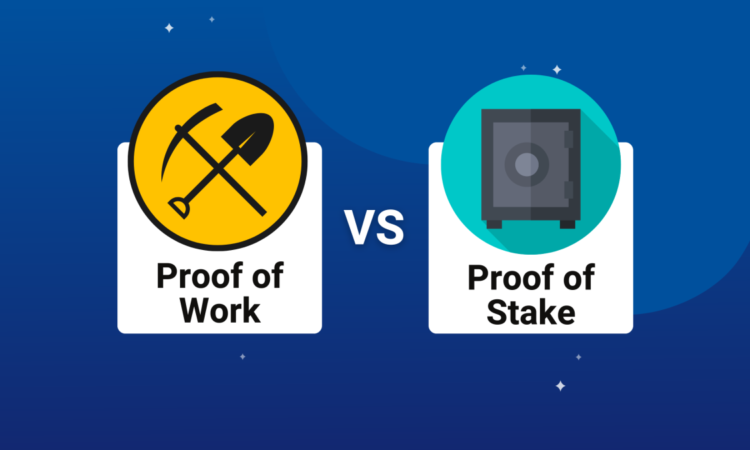Exploring the multifaceted realm of blockchain technology, particularly the consensus mechanisms that propel its core functionality, can seem like navigating a labyrinth. These mechanisms act as the lifeblood of any blockchain network, safeguarding its integrity and security and achieving consensus across its extensive network of nodes. The exploration of this topic aims to simplify the complexities surrounding two crucial consensus models, Proof of Work (PoW) and Proof of Stake (PoS), empowering you with the insight to identify the model that best suits your blockchain projects.
In the ever-evolving digital landscape, PoW and PoS stand as the fundamental frameworks supporting blockchain technology. Each offers distinct benefits and limitations, enabling a secure and consensus-driven incorporation of new blocks into the blockchain. This discussion is designed to demystify these models, illuminating their operational mechanisms, efficiency, and implications for security.
Understanding the Proof of Work Consensus Model
The Proof of Work model, introduced by Bitcoin’s mysterious founder, Satoshi Nakamoto, marks a milestone in the history of blockchain innovation. Its roots trace back to academic papers from the early 1990s, setting the stage for a revolutionary method of validating digital transactions.
Proof of Work is essentially a computational race where participants, or miners, compete to solve complex cryptographic puzzles. Having demonstrated significant computational effort, the winner earns the privilege of appending the newest block to the blockchain, receiving cryptocurrency and transaction fees as a reward. While this model promotes fairness among participants, it requires immense computational resources, sparking debates over its energy consumption and environmental footprint.
Despite its high energy demand, Proof of Work’s method of equation-solving ensures equitable competition among miners. However, the potential for a 51% attack, where most miners could theoretically control transaction verifications, remains a concern. Although feasible in theory, blockchain networks’ decentralized and expansive nature reduces the likelihood of such an event, maintaining the integrity of the Proof of Work consensus.
The Emergence of Proof of Stake
Building on the principles of Proof of Work, Proof of Stake offers an innovative alternative, with the Ethereum blockchain leading its adoption. This model shifts from computational contests to a stake-based validation method, where the chance to validate a block is directly proportional to the validator’s pos cryptocurrency holdings in the network.
This shift represents a move towards energy efficiency and operational effectiveness, addressing the significant energy requirements of its predecessor. By tying validation power to one’s stake, Proof of Stake discourages malicious behavior through economic deterrents, rendering attacks financially unfeasible.
The introduction of Proof of Stake marks a significant advancement in consensus mechanisms, characterized by lower energy consumption and a fairer distribution of validation opportunities. Despite being a relatively new model, it faces challenges in adoption and scalability, aspiring to prove itself as a secure and dependable framework for blockchain networks.
Comparative Analysis: Proof of Work vs. Proof of Stake
While PoW and PoS aim to authenticate and achieve consensus on transactions within a blockchain, their approaches differ markedly, influencing their energy efficiency, security profiles, and sustainability.
The key difference is their operational focus: PoW emphasizes continuous computational effort, while PoS values economic investment as the basis for validation authority. This distinction affects their environmental impact, with PoW’s significant energy use contrasting sharply with PoS’s efficiency, offering a more sustainable avenue for blockchain development.
In terms of security, both models offer robust defenses against various attacks. PoW depends on widespread computational power across its network, making attacks economically daunting. PoS, while potentially introducing new vulnerabilities, implements strategies that align validators’ interests with the network’s security.
Conclusion
The Proof of Work and Proof of Stake consensus mechanisms represent pivotal technologies underpinning blockchain networks’ security and functionality. While PoW emphasizes computational power and energy expenditure, ensuring network integrity through a competitive mining process, PoS offers a more energy-efficient and potentially equitable alternative by aligning validation opportunities with stakeholding. Each model has its own advantages and challenges, impacting their adoption and implementation across various blockchain projects. As the blockchain landscape continues to evolve, understanding the nuances of these consensus mechanisms is crucial for anyone looking to navigate the complexities of blockchain technology and leverage its potential for secure, decentralized digital transactions.






